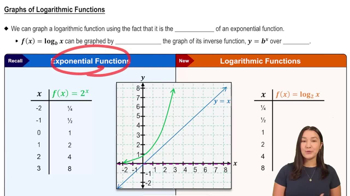Table of contents
- 0. Functions7h 52m
- Introduction to Functions16m
- Piecewise Functions10m
- Properties of Functions9m
- Common Functions1h 8m
- Transformations5m
- Combining Functions27m
- Exponent rules32m
- Exponential Functions28m
- Logarithmic Functions24m
- Properties of Logarithms34m
- Exponential & Logarithmic Equations35m
- Introduction to Trigonometric Functions38m
- Graphs of Trigonometric Functions44m
- Trigonometric Identities47m
- Inverse Trigonometric Functions48m
- 1. Limits and Continuity2h 2m
- 2. Intro to Derivatives1h 33m
- 3. Techniques of Differentiation3h 18m
- 4. Applications of Derivatives2h 38m
- 5. Graphical Applications of Derivatives6h 2m
- 6. Derivatives of Inverse, Exponential, & Logarithmic Functions2h 37m
- 7. Antiderivatives & Indefinite Integrals1h 26m
- 8. Definite Integrals4h 44m
- 9. Graphical Applications of Integrals2h 27m
- 10. Physics Applications of Integrals 2h 22m
4. Applications of Derivatives
Differentials
Problem 69
Textbook Question
Evaluate the following limits. Use l’Hôpital’s Rule when it is convenient and applicable.
lim_x→∞ log₂ x / log₃ x
 Verified step by step guidance
Verified step by step guidance1
First, identify the form of the limit as x approaches infinity. Both the numerator log₂(x) and the denominator log₃(x) approach infinity, resulting in an indeterminate form ∞/∞.
Since the limit is in the indeterminate form ∞/∞, we can apply l'Hôpital's Rule. This rule states that if the limit of f(x)/g(x) as x approaches a value results in an indeterminate form, then the limit is equal to the limit of their derivatives, f'(x)/g'(x), provided this new limit exists.
Differentiate the numerator: The derivative of log₂(x) with respect to x is 1/(x ln(2)).
Differentiate the denominator: The derivative of log₃(x) with respect to x is 1/(x ln(3)).
Apply l'Hôpital's Rule by taking the limit of the ratio of the derivatives: lim_x→∞ [1/(x ln(2))] / [1/(x ln(3))]. Simplify this expression to find the limit.
 Verified video answer for a similar problem:
Verified video answer for a similar problem:This video solution was recommended by our tutors as helpful for the problem above
Video duration:
3mPlay a video:
Was this helpful?
Key Concepts
Here are the essential concepts you must grasp in order to answer the question correctly.
Limits
Limits are fundamental in calculus, representing the value that a function approaches as the input approaches a certain point. In this context, we are interested in the behavior of the function as x approaches infinity, which helps us understand the long-term behavior of the logarithmic functions involved.
Recommended video:

One-Sided Limits
Logarithmic Functions
Logarithmic functions, such as log₂ x and log₃ x, are the inverses of exponential functions. They are crucial for understanding growth rates and can be transformed using properties of logarithms, such as the change of base formula, which allows us to express logarithms in terms of one another, facilitating limit evaluation.
Recommended video:

Graphs of Logarithmic Functions
l'Hôpital's Rule
l'Hôpital's Rule is a method for evaluating limits that result in indeterminate forms like 0/0 or ∞/∞. It states that if these forms occur, the limit of the ratio of two functions can be found by taking the derivative of the numerator and the derivative of the denominator, simplifying the evaluation of the limit.
Recommended video:
Guided course

Power Rules







